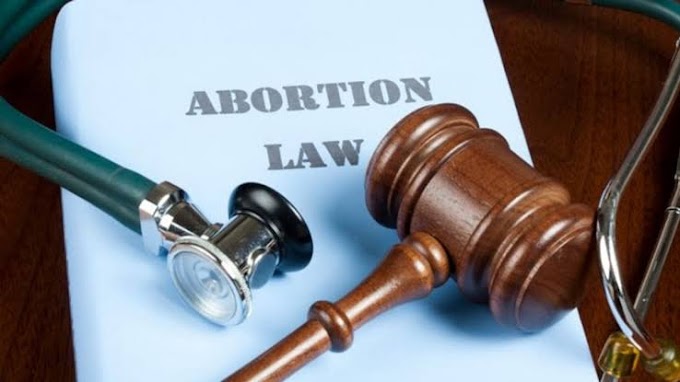MEN’S PROTECTION IN INDIA
Author:- SAMAR SINGH, a Student of BIHAR INSTITUTE OF LAW, PATNA.
INTRODUCTION
Both males and women require different levels of remedies in terms of protecting their rights and individuals, thus before we go into the problem of domestic violence experienced by males in India, and also harassment experienced by males we need to bear this in mind. We are unaware of the issue that anyone can experience harassment, regardless of age, gender identity, religion, or attitude. Men are not given the same amount of attention as women when it comes to harassment. Yes, harassment may also affect males. Many of us believe that this is a misconception because men are frequently the targets of harassment directed at women. In my article, I'll describe the harassment and domestic violence that males experience.
Article 14 of the Indian Constitution mentions the right to equality, yet issues relating to men are not given as much attention as issues relating to women.
For instance, we can consider the numerous sections of the Indian Penal Code that are designed to safeguard women, such as sections 354, 376, and 509.
The Domestic Violence Act of 2005's remedies are intended to make the rights of women guaranteed by the Indian Constitution more effectively protected. The Act provides for monetary relief, counseling, medical help, child custody, and the ability to live in the joint household as forms of relief, remedy, or recompense. These issues are primarily affecting women; hence the Act particularly addressed them to offer relief. Although these remedies would have been accessible under ordinary law, the passage of the act assured their distribution to the women who were victims of domestic violence.
In India, males who experience domestic violence may seek remedies under the Indian Penal Code, 1860, which may include imprisonment as well as fines and/or other penalties as established by the court.
Men’s rights Movements in India
Various autonomous men's rights organizations make up India's men's rights movement. The movement's supporters are in favor of passing gender-neutral legislation as well as repealing laws that they believe to be discriminatory against men.
Activists for Indian men's rights are organized around legislation that they see as discriminating against men, such as anti-dowry laws, divorce, and child custody. They claim that the prevalence of domestic violence against males has grown over time and that many cases go unreported because men are either ashamed to disclose abuse or are afraid of being falsely accused in retaliation. Additionally, some proponents of men's rights believe that India's rules on sexual harassment and reporting of rape are discriminatory towards men.
History: - The Pirito Purush (The Persecuted Man), Purush Hakka Samrakshan Samiti (Committee for the Protection of Men's Rights), and Patni Atyachar Virodhi Morcha (Protesting Torture by Wives) organizations were among the first men's rights organizations to emerge in India in the 1990s. These organizations believed that some of the improvements made by feminists needed to be undone and advocated rights for men, especially husbands. In response to claimed violations of Section 498A of the Indian Penal Code, the three groups were established.
And after that various NGO’s formed for the protection of men’s rights. On 19 November 2007, the ‘Save Indian Family Foundation’ celebrated International Men's Day for the first time in India.
Based on the abuse of Section 498A,
Harassment Segregation based on sexual orientation is skewed toward men. The subject of significant discussion has specifically been Section 498A, the statute that forbids remorselessness against women by a spouse and his family. Men's rights campaigners, such as the Spare the Family organization in India, claim that women regularly violate the law.
The observational analysis did not establish any unbalanced abuse of Section 498A when compared to other criminal statutes, according to a 2012 report on Section 498A from the Government of India. Although a case of abuse of Section 498A was not established, more recently the Supreme Court issued directives requiring that any complaint received by the police under Section 498A be reported to a Family Welfare Committee before the police can apprehend the offender.
Divorce and child custody law,
The divorce and child custody laws in India, according to men's rights campaigners, are unfair to males. According to them, this enables divorced women to bar males from seeing their kids for extended periods of time. According to them, alimony should not be paid if the wife is the family's principal breadwinner and males should be considered capable of raising children by the law.
In India, a father only receives custody of a kid if the mother is either mentally ill or has abandoned the child at home. Currently, two laws oversee the issue of child custody in divorce cases: the Guardians and Wards Act, of 1890 and the Hindu Minority and Guardianship Act, of 1956. However, neither of the statutes makes any allowances for joint custody or shared parenting.
According to the Evidence Act of 1872, a child who is born during a marriage or within 280 days after a divorce is regarded as legitimate and is eligible for child support and inheritance.[80] DNA paternity testing currently do not supersede this law. The decision to order child support from a non-biological parent may nevertheless be made by the courts, even in the face of genetic evidence.
Better child access rules have been advocated by a group called Children's Rights Initiative for Shared Parenting (CRISP), which has labeled the existing custody laws as discriminatory towards women. It has urged changes be made to the Guardians and Wards Act to make shared parenting a requirement.
Data on domestic violence against men,
Between April 2005 and April 2015, surveys by the Save Family Foundation and the My Nation Foundation surveyed nearly 1,000,000 men online. They discovered that nearly 98.2% of men had experienced serious domestic violence at the hands of their spouses and in-laws. Male victims of violence often experience physical, verbal, financial, sexual, mental, emotional, and mental abuse.
The afflicted men's corresponding order of violence is:
Economic violence harmed 34.3% of men.
Physical violence harmed 28.6% of males, whereas emotional violence affected 27.5% of men.
Sexual violence impacted 20.4% of men.
All the men surveyed experienced verbal abuse as the least violent kind of violence.
Cruelty against Mens
The concept of cruelty varies depending on the circumstances of each case since the judge must weigh the mental anguish, the injuries sustained, the complaints and taunts, among many other factors. There is no precise definition for the notion of cruelty; it is a subjective term. Cruelty in one circumstance might not always constitute cruelty in another.
Anil Bhardwaj vs Nirmlesh Bhardwaj, both the parties were married on 31-1-1979 after their marriage the wife used to not do any household chores, and when asked she said she was not used to doing household chores. Even then the husband did not bother. When the husband went to his in-law's house, the recommended him so stay separately with his wife from his family. But he did not accept this and because of this, they did allow him to have sexual intercourse with her. During there stay together she never allowed him for sexual intercourse and when he attempted, she used to become furious. The court held that Denial for a physical relationship without sufficient reasons also amounts to cruelty.
Prem Chandra Pandey vs Smt. Savitri Pandey, The wife has made up evidence against the husband and his family, claiming that they sought dowry both before and after the wedding. The wife's father refused to comply with their demands, so they tortured her. She also made up the claim that he was married to another lady before getting remarried to satisfy his need for satisfaction. These accusations were all found to be untrue. As a result, the court determined that making up accusations of adultery is harsh.
Conclusion
To protect men from harassment, the Indian penal code should be amended. Men should be included in the Sexual Harassment at Workplace Act of 1860 as well. Everyone should be aware that harassment affects both men and women equally. In spite of the fact that harassment against women is more prevalent, men are frequently a target of harassment. Men's harassment issues should pique the same level of attention among people.
It's important to let people know it's alright to report harassment they experience. To aid the males who experience harassment, there ought to be more NGOs, assistance programs, and movements. Even if laws are passed, society should cooperate with the state.




![Freedom of Speech in India [Indian Supreme court and Law of Sedition]](https://blogger.googleusercontent.com/img/a/AVvXsEiGLLUmLKq5Da6xDZplasOZHKRj-jOhWPkoeuy0_Eq757tUpOiHz-xooXwIlAjF0-hmBfi-TtMIv6on_sVgBXVq4wbWwnbsqLOcNX22S8C2aSq-ZuK3vn9wWAx8tXByYOBfwc0hs6b8RJV84YNFG2greouGKjup6g8kN-xVlchW33VHdSSmrhLC1BUEVbGp=w680)





